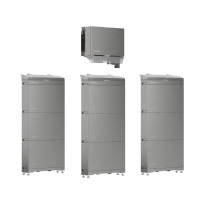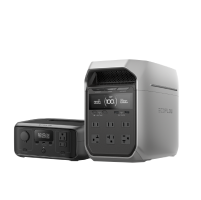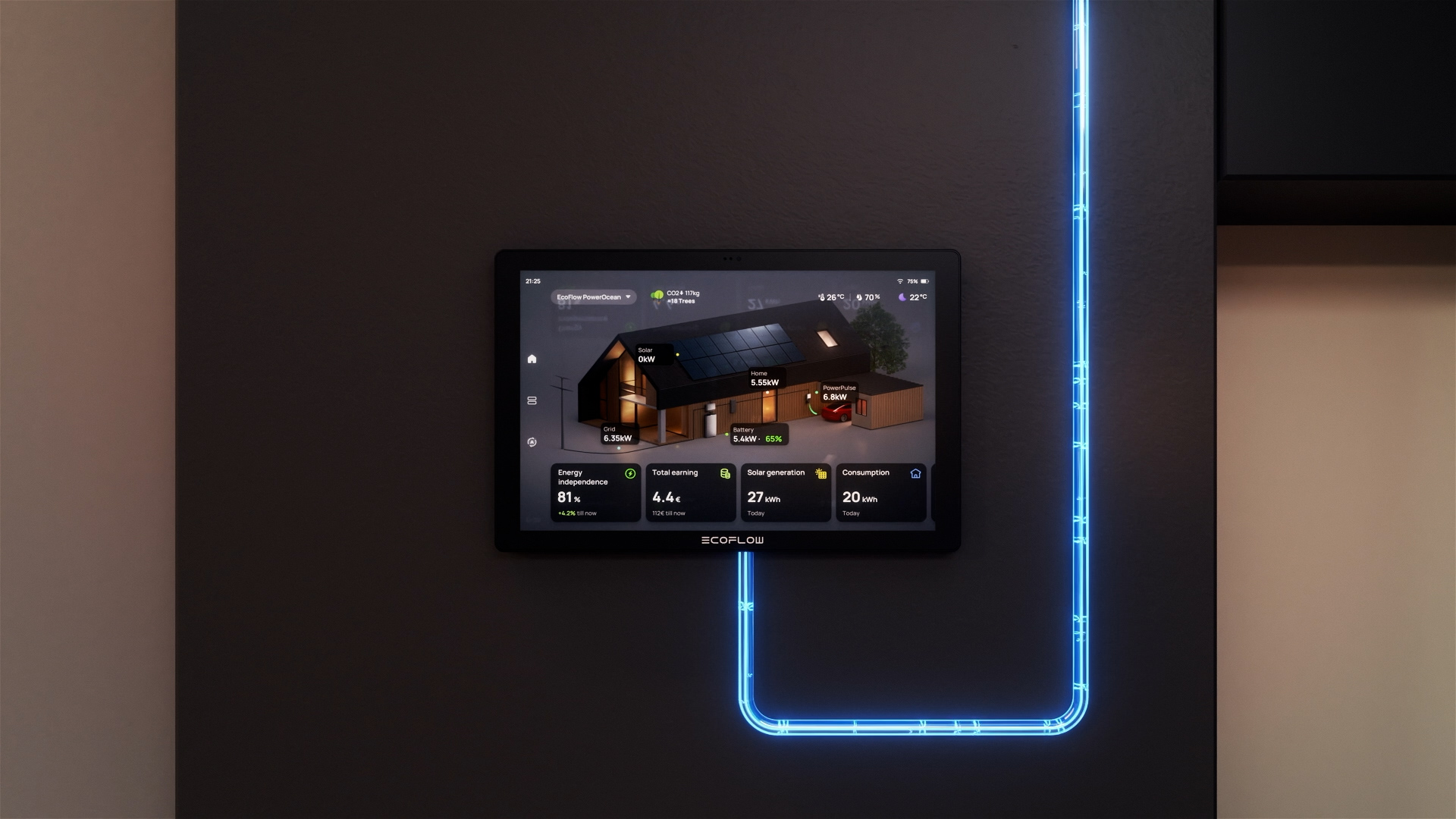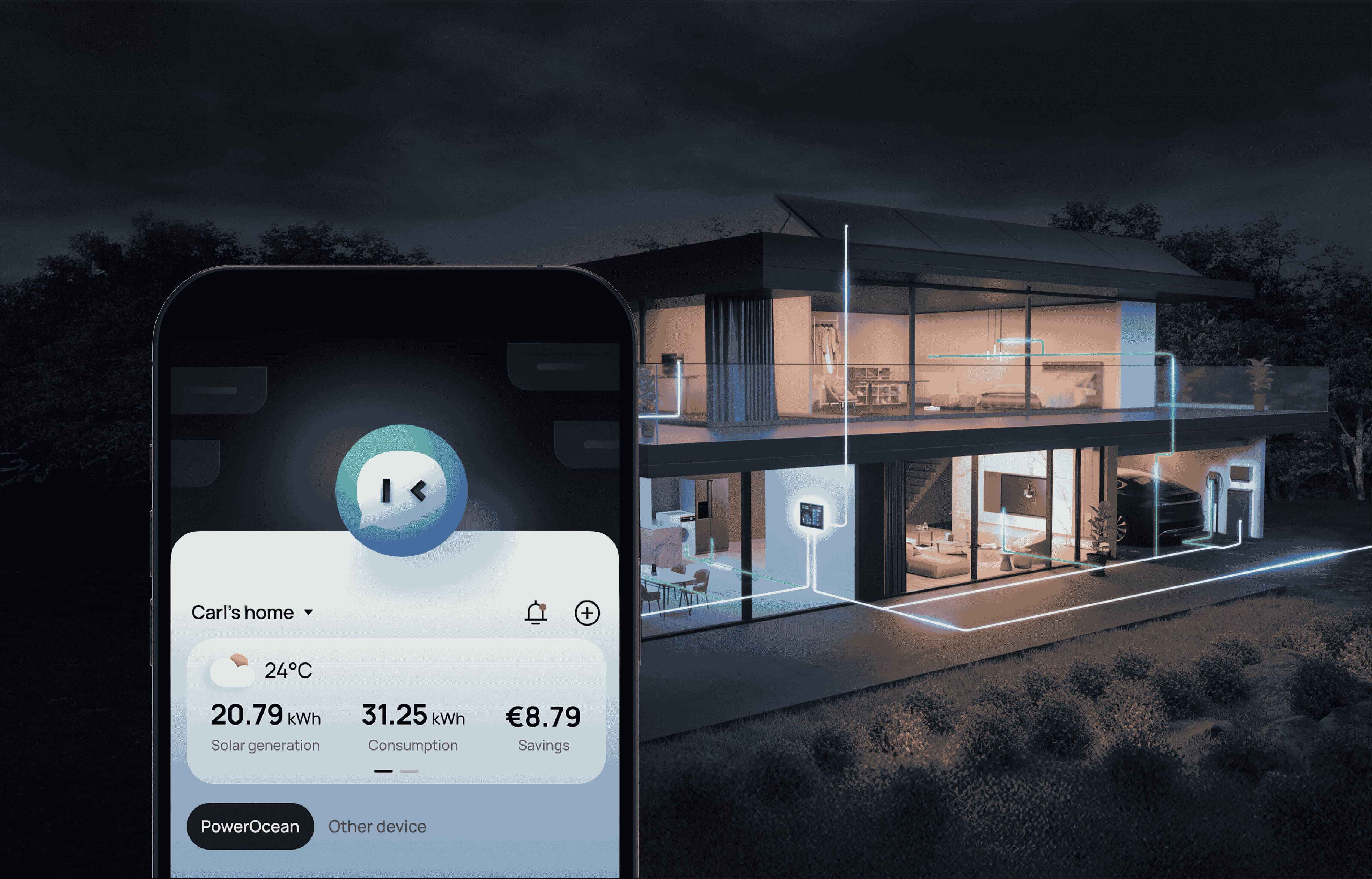Why Home Storage Is Important When Turning Your Home Into a Solar House
A solar house isn’t just a roof with solar panels. Homeowners must consider how much solar energy is actually going to good use. Without a system for storing and directing solar power, your efforts might not be as foolproof as you think.
As energy prices soar and incentives encourage more UK homeowners to go solar, understanding how to manage your energy effectively is crucial. In this article, we’ll discuss why home storage is an essential step in turning your home solar.
What is a Solar House?
A solar house generates a significant portion of its own electricity from sunlight. They incorporate an integrated system of solar panels, battery storage, and smart controls to maximize efficiency and self-consumption.
The solar house “trend” saw a record surge in 2023, when UK rooftop solar installations almost hit 190,000—the highest in over a decade. Today, the UK government is encouraging more installations with incentives like 0% VAT on solar panels and home batteries until March 2027.
How Much Does Solar Power Save?
One reason solar homes have become popular is the significant amount of money they help homeowners save. For context, the average 3-4 person UK household uses 8 to 10kWh of electricity daily or up to 3,600kWh annually. With a solar PV system, you can generate between 50 to 70% of your needs. For every kWh you don’t import, you save up to 30 pence.
Homes without storage may only self-consume between 20 and 40% of their needs, while the rest is sold back at lower rates (5 to 15p per kWh). With storage, you can bump self-consumption up to nearly 90%.
Why Add Home Storage to Your Solar House?
While solar panels can significantly reduce electricity bills, introducing storage will make your household even more self-reliant. Here are a few other reasons why you should consider adding home storage.
Boosting Self-Consumption
The ultimate goal of home storage solutions like EcoFlow PowerOcean is to help you store excess solar generation for use when you need it most. By using stored solar energy in the evening, you avoid pulling from the grid.
With a time-of-use tariff, you can program your system to charge or discharge in sync with fluctuating prices. Some tariffs pay a premium (about 30p per kWh between 4 and 7pm) for electricity exported during the early evening peak.
Improving Return on Investment (ROI)
Going solar comes with significant upfront costs, but how much grid electricity you can avoid buying will determine how quickly you break even and how much profit you make. In terms of solar panel ROI, a 3 kW AC output from 12 solar panels has a solar payback of about 6 years, but it will also give you an average annual savings of £950.
With a home battery like PowerOcean, more of your solar generation directly replaces expensive electricity because you aren’t exporting most of it. With the UK’s 0% VAT policy, you immediately save 5% of the system cost. Payback for a solar and battery setup can take as little as 7 years.
Enhancing Energy Independence and Security
If you live in an area prone to power cuts, investing in home storage can give you the peace of mind you need. Batteries, often paired with hybrid inverters, isolate your home from the grid and power your home as usual.
During Europe’s energy crisis, homes equipped with battery storage were better protected against bill shock—something to consider if you live in a more rural area. Running on LiFePO4 batteries, PowerOcean has an integrated hybrid inverter so you can efficiently lessen your dependence on the grid.
Supporting the Energy Transition
While solar and wind are powerful, they’re unpredictable. Thus, the ability to store the energy you create keeps your home functioning steadily. According to the UK’s Smart Systems and Flexibility plan, solar batteries are the key to turning your home into a mini power hub that can help strengthen the national grid while saving money.
What kind of product or solution are you interested in?


How Storage Works in a Solar House
Solar panels generate electricity during the day, with batteries storing excess energy for later use. How your battery “communicates” with the panels is through AC and DC coupling.
AC-coupled systems convert solar energy to AC for your home, and back to DC for storage—ideal for retrofitting. With DC-coupled systems, energy doesn’t undergo conversion, which is best for new installations. On the other hand, a hybrid inverter converts DC power into AC for home use, routes extra DC energy into the battery, and handles power back to the grid when necessary.
Finally, the mind behind a solar house is a smart home energy management system (HEMS). EcoFlow’s AI-powered HEMS can optimize and monitor your energy use automatically, and fully integrates with PowerOcean as well.
When it comes to comparing home batteries, focus on the key specifications below:
Capacity (kWh): How much energy the battery stores
Power (kW): How fast the battery can deliver energy
Depth of Discharge (DoD): How much of the battery you can use (for example, modern lithium batteries allow between 90 and 100% total use)
Round-trip efficiency: How much energy is returned after charging and discharging
Lifespan (cycles): How long the battery lasts
In context, PowerOcean (Three-phase) has a 95% DoD and a 4.8 kWh usable capacity from a single 5 kWh battery pack. It’s also fireproof and weatherproof, with an average lifespan of 6000 cycles. Featuring a modular system, you can also easily expand your storage capacity to 45kWh with PowerOcean.

Economic and Policy Context
Home storage is becoming the puzzle piece needed to push a high-renewables future. The EU’s Renewable Energy Directive is urging member states to remove barriers to solar production and meet climate targets through these initiatives.
Smart Export Guarantee (SEG)
The Smart Export Guarantee (SEG) is a UK policy that compensates homeowners for sending excess solar energy back into the grid. Rates are set by energy suppliers, ranging between 5p and 15p per kWh. With a home battery, you can store energy and time your exports for better prices.
Zero VAT on Batteries (UK)
As part of government efforts to lower the cost of green home improvements, VAT went from 5% to 0% on installations for solar panels, home batteries, and other energy-saving equipment. This VAT incentive applies to most residential solar and storage installs until March 31, 2027.
EU Perspective
The EU’s push for home storage focuses on flexibility, decentralization, and resilience. It’s empowering homeowners to become both producers and consumers of energy. UK residents own millions of small-scale batteries that balance supply and demand more effectively than the centralized grid.
Building the Complete Solar House Ecosystem
Imagine this. Solar panels capture sunlight, turning it into electricity. Then, extra power flows into a battery like PowerOcean, to save for later usage. A smart home energy manager, like EcoFlow HEMS, manages solar output, battery level, and grid electricity prices to determine where your kilowatts should be allocated.
And with EcoFlow PowerInsight 2, you can fully monitor and optimize the energy controls of your home. You can manage your energy flow, predicts usage patterns, and respond to time-of-use tariffs.
Key Takeaways: Why is Solar Energy Good?
Solar energy is inherently “good” for obvious reasons—you save money while lowering your carbon footprint. But the benefits run deeper than just contributing your fair share to the environment.
First, you’re getting round-the-clock clean power and maximizing your self-consumption. You’ll also be less vulnerable to energy price fluctuations and supply issues. Add home storage, and you ensure that none of your clean energy goes to waste. With everything working together, your solar home becomes completely energy efficient.
FAQs
How much can a solar battery save on energy bills?
A solar battery can boost a typical solar home’s self-consumption from 40% to roughly 80% or more. By storing and selling energy when prices are high, households can enjoy hundreds of pounds in annual savings and double their bill reduction.
Do solar panels work during a power cut?
Standard grid-tied solar systems will shut off during a power cut for safety reasons, but batteries with an appropriate inverter and backup system ensure that your solar panels can continue to power essential loads, such as lights and appliances.
Is solar battery storage worth it in the UK?
Yes, solar battery storage is a worthy investment for UK households, as they can capture more value from their solar panels and ensure they’re distributing energy appropriately. It shortens the payback period and even has lower upfront costs.



